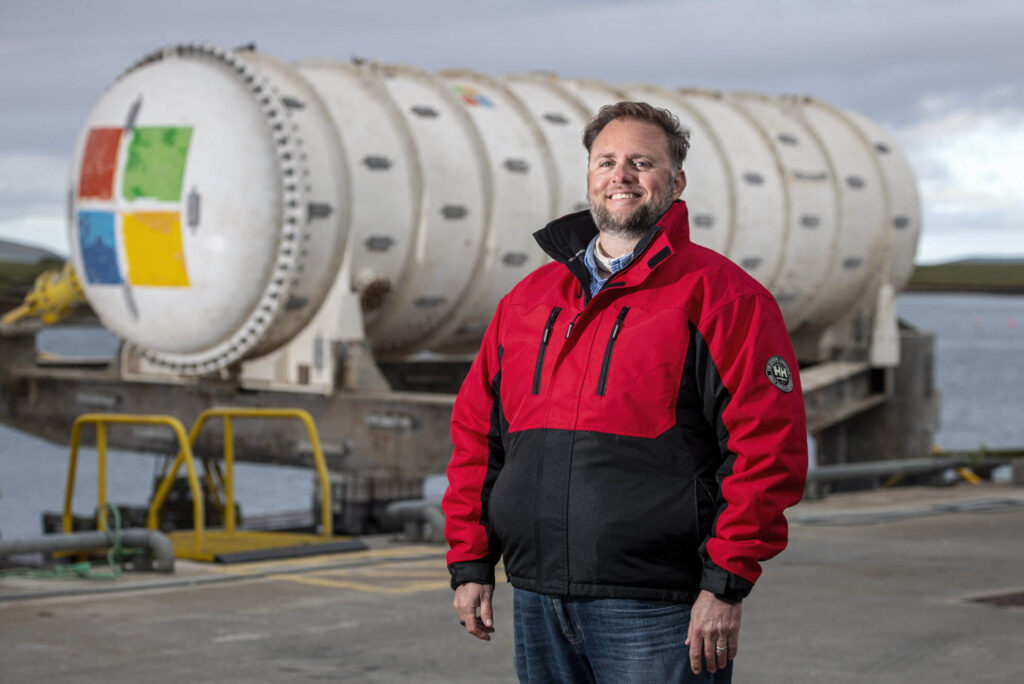This content has been archived, and while it was correct at time of publication, it may no longer be accurate or reflect the current situation at Microsoft.
Microsoft’s shift to working remotely in 2020 opened the door for the company to double down on using Microsoft Azure to drive its internal transformation.
Well past moving its workloads to the cloud, internal teams at the company spent their time fine-tuning how they use Microsoft Azure in 2020. Led by Microsoft Digital, the Azure-fueled projects the company tackled internally ranged from overhauling internal auditing processes, helping the company safely and securely pull an underwater datacenter up from below the sea, to using a Zero Trust mindset to secure internal infrastructure, applications, and services that the company has moved to Azure.
Retooling internal audits
Microsoft’s financial audits were labor intensive, too manual, and slow.
To fix that, the Microsoft Finance team partnered with the Microsoft Digital team to use Microsoft Azure and the Microsoft Azure DevOps platform to automate and streamline the process—ending the need to manually manage thousands of unconnected Microsoft Excel files.
“The teamwork that we’ve had with the Microsoft Digital team has been a true demonstration of One Microsoft and how we can break down barriers and really come together to solve a big problem,” says Michael Williams, an audit program manager in Microsoft Finance.
Learn more on how the company’s audit practices have been transformed with Azure DevOps.

Staying connected underwater
Microsoft placed a Microsoft Azure datacenter under water to test how well that would work. When it came time to pull the datacenter up from the sea, the team received the help of Microsoft Digital engineers to make sure it stayed connected.
With their help, the Project Natick team created a secure wide-area network (WAN) connection from the underwater datacenter to Microsoft’s corporate network.
“We needed the connectivity that they provided to finish off our project in the right way,” says Mike Shepperd, a senior research and development engineer on the Microsoft Research team who was brought on to support research on the feasibility of underwater datacenters. “We also needed that connectivity to support the actual decommissioning process, which was very challenging because we had deployed the datacenter in such a remote location.”
Enhancing security with Microsoft Azure
Microsoft Digital’s team is helping make sure company employees don’t have their productivity interrupted or their security compromised as the company finishes and optimizes its move to Microsoft Azure and the cloud.
The goal is to reduce or eliminate access to the corporate network. We’re asking our engineers to move our applications to an external posture using the cloud.
– Mahvish Sheikh, program manager, Microsoft Digital
With the company nearly 100 percent in the cloud, Microsoft Digital is now focused on helping teams across the company use Microsoft Azure efficiently and securely using a Zero Trust security posture, says Mahvish Sheikh, a program manager for Microsoft who has been active in the cloud work.
“The goal is to reduce or eliminate access to the corporate network,” Sheikh says. “We’re asking our engineers to move our applications to an external posture using the cloud.”
Fine tuning on-premises workload

Microsoft has moved most of its internal workload to Microsoft Azure, but not everything.
Why is on-premises hardware still needed?
“Sometimes it’s the kind of app a team is using,” says Dana Baxter, a principal service engineer at Microsoft. “They might not have the infrastructure to move it to the cloud. There might be dependencies on systems that are not yet migrated.”
Though those last few workloads are not on Azure, Baxter wanted Microsoft IT administrators to be able to manage those servers and virtual machines (VMs) with the same ease as you can with an Azure dashboard.
Could there be a way to connect these assets to Azure?
The answer was yes—they could use Microsoft Azure Arc.
Learn how Microsoft is extending Azure management to the private cloud with Azure Arc.
Modernizing with Azure microservices
Until recently, Microsoft used a massive, monolithic, on-premises application to process more than 220,000 purchase orders every year.
“MyOrder was wizard-based, so users advanced through the app in a particular sequence,” says Vijay Bandi, a software engineer on the MyOrder team at Microsoft. “If you advanced to a point where you didn’t have the information for a required field, you were stuck. It was an awful experience.”
Microservices were the answer—MS Digital used them to transform the entire process.
Learn how Microsoft rebuilt its purchase order system with Azure microservices.
Transforming Microsoft’s call center
Managing Microsoft’s hundreds of product phone lines and data manually was an ineffective, outdated process.
“Each time we came up with a new product, we’d spin up a new phone number and a new phone system,” says Matt Hayes, a program manager in Microsoft Digital.
A new system was needed.
Hayes and team turned to Microsoft Azure and other cloud products to rebuild the entire system.
To learn more about how Microsoft used Microsoft Azure internally in 2020 and to learn more about how Microsoft deploys its own technology and services across the company, visit the Microsoft Inside Track website.





